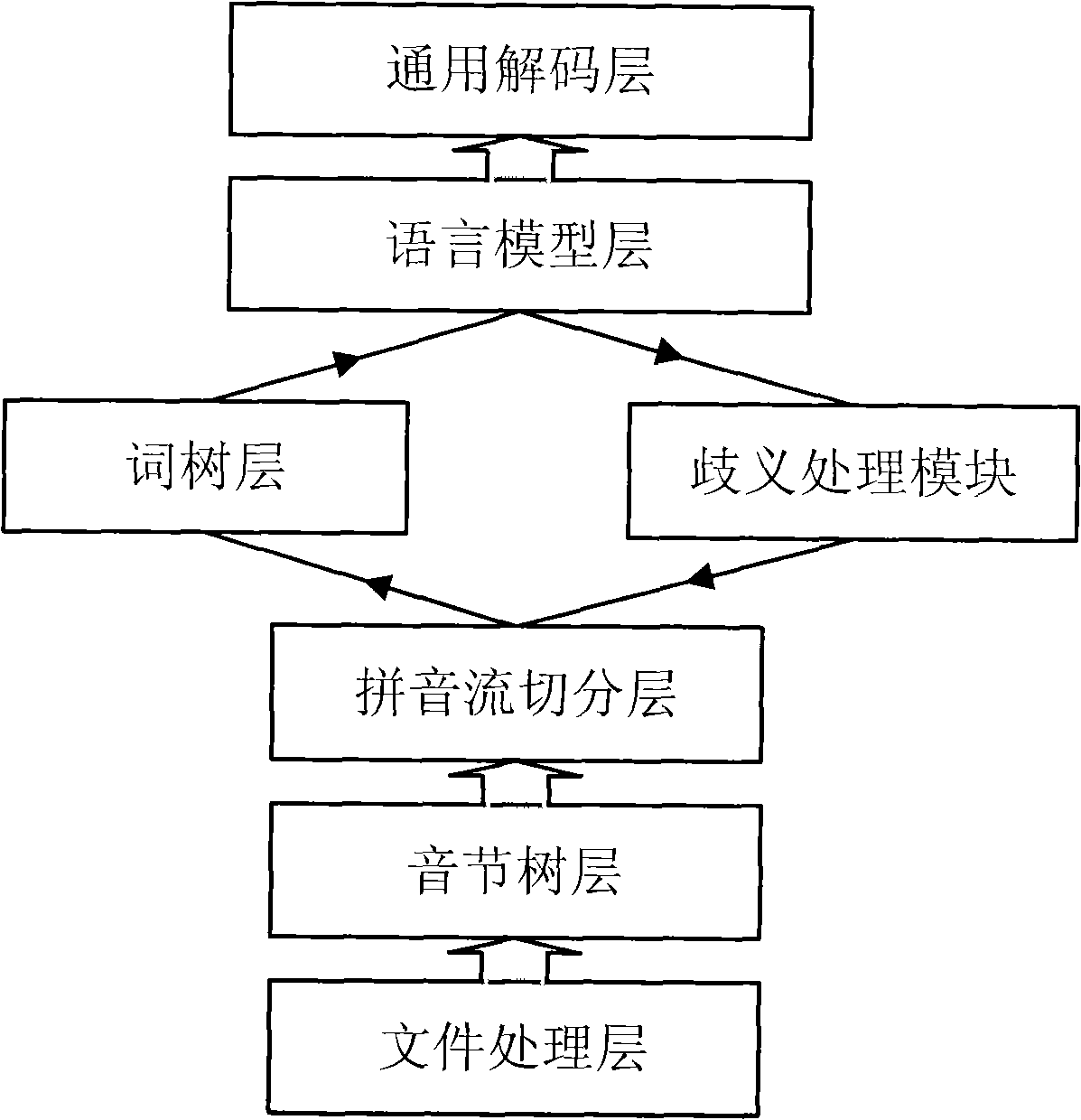Tone-character conversion method
A phonetic word conversion and syllable technology, applied in the direction of electrical digital data processing, special data processing applications, instruments, etc., can solve problems such as ambiguity in complex combinations, achieve the effects of ensuring efficiency, reducing storage space limitations, and solving ambiguity problems
- Summary
- Abstract
- Description
- Claims
- Application Information
AI Technical Summary
Problems solved by technology
Method used
Image
Examples
Embodiment 1
[0055] This embodiment illustrates the process of converting the pinyin string "yigemingantian" into a text string according to the prior art method, such as image 3 shown. In the present embodiment, the pinyin string segmentation method is the forward maximum matching method, the word retrieval method is realized through a dictionary tree, the language model adopts a ternary N-gram language model (that is, N gets 3), and WORD_MAX_LEN is 3 (that is, at most Consider three syllables), BEAM_WIDTH is 4 (that is, the candidate word set of syllables includes 4 elements, corresponding to image 3 four rectangular boxes in each column). The specific process is described as follows:
[0056] 1. Input the pinyin string "yigemingantian" and divide it into five-syllable syllable combinations of "yi"+"ge"+"ming"+"an"+"tian". For a single syllable, it is represented by Y below, for example, Y 1 = "yi";
[0057] 2. Let i=1,
[0058] a) When j=3, since there is no Y -1 +Y 0 +Y 1 , ...
Embodiment 2
[0079] The present embodiment illustrates the process of converting the pinyin string "yigemingantian" into a literal string according to the method, as Figure 4shown. Its concrete steps are identical with embodiment 1, difference is:
[0080] For each syllable, when j=2, check Y i-1 +Y i Whether it belongs to type I ambiguity, when j=1, check Y i Is it a Type II ambiguity.
[0081] Specifically for this embodiment, in step 5.b, Y is detected 3 +Y 4 , that is, "mingan" belongs to type I ambiguity, so the obtained word "sensitive" is incorporated into W 42 , then W 42 ={homicide, light and dark, sensitive}, assuming that the final score ranking in step 5.c is "start-one-sensitive" > "start-one-homicide" > "start-one-light and dark" > "one-name- According to "> "one-name-case">..., then W' in this embodiment 4 ={sensitive, homicide, light and dark, press};
[0082] Also, check out Y in step 6.c 5 , that is, "tian" belongs to type II ambiguity, so the obtained word "p...
PUM
 Login to View More
Login to View More Abstract
Description
Claims
Application Information
 Login to View More
Login to View More - Generate Ideas
- Intellectual Property
- Life Sciences
- Materials
- Tech Scout
- Unparalleled Data Quality
- Higher Quality Content
- 60% Fewer Hallucinations
Browse by: Latest US Patents, China's latest patents, Technical Efficacy Thesaurus, Application Domain, Technology Topic, Popular Technical Reports.
© 2025 PatSnap. All rights reserved.Legal|Privacy policy|Modern Slavery Act Transparency Statement|Sitemap|About US| Contact US: help@patsnap.com



